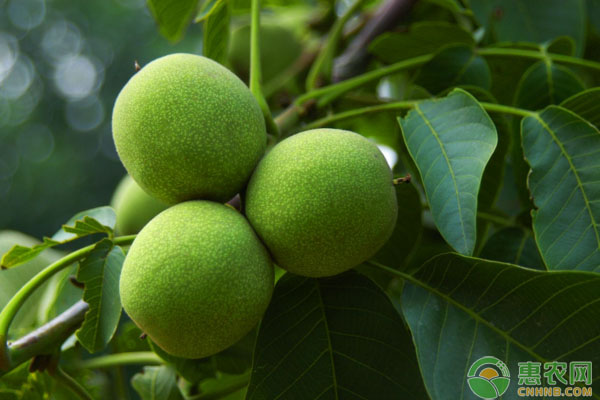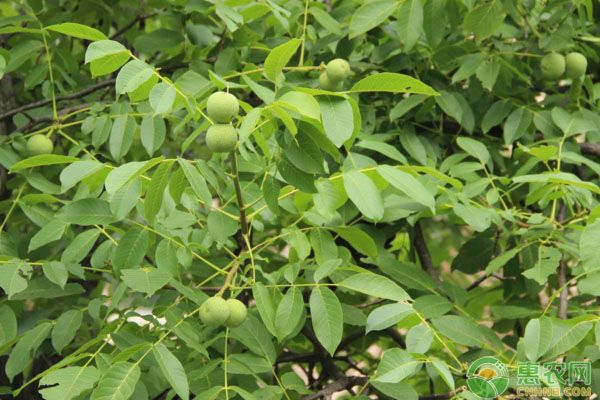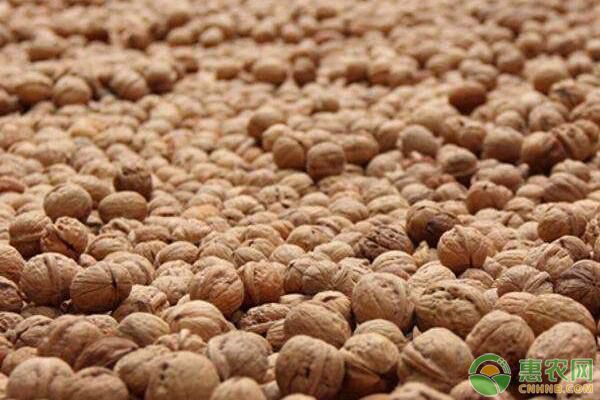Nowadays, the development area of ​​walnut in Hengshui City of Hebei Province has reached more than 40,000 mu, but due to the lack of management of some planters, the low-temperature and windy climate in Hengshui City, Hebei Province, has caused saplings and their vulnerability to freezing damage, seriously affecting the second. Years of tree growth, so today Xiaobian said that the symptoms and preventive measures of low temperature freezing damage of Hengshui walnut young trees in Hebei. 1 freezing damage symptoms The main performances of walnut saplings are: frost damage at the end of autumn and spring, cold damage in winter, and physiological drought in early spring (sucking). 1.1 Frost damage The frost damage mainly occurs in the late autumn and early spring, the color of the frozen branches will turn black, the leaves will not fall off normally, and the branches will become black and rot in the coming spring. 1.2 Low temperature freezing damage The tree with a large annual growth or low-lying land is prone to freezing damage. After the branches are frozen, the cortex and the formation layer become black. When the new shoot grows to 15-20 cm, it suddenly wils until death. When the base of the trunk is damaged by freezing, the roots and necks will rot. In severe cases, the tree will be weak or the whole plant will die. 1.3 drawing The pumping mainly occurs in young trees with a large amount of autumn shoots, and the young branches begin to lose water and shrink in winter. Although the light can be recovered, the sprouting will be delayed. During the winter and spring, the soil freezes and the roots are difficult to absorb water. When the water loss reaches a certain level, the underground part can not be replenished in time, and the water supply and demand imbalance will occur, causing physiological drought and pumping. 2 Causes of freezing damage 2.1 Weak growth (1) The young branches have large core, high water content and poor cold resistance. In addition, the temperature and the dryness in winter and early spring make the branches lose a lot of water. (2) The robust tree has strong anti-freezing ability, weak tree growth, low sugar content and poor anti-freezing ability. 2.2 Climate factors In the autumn, the temperature is high and rainy, the young shoots of the young trees are not fully developed, and the water dispersion is fast; the temperature in winter is abnormal and the change is severe; the early spring is dry and windy, and the ground temperature rises slowly, thus affecting the root water absorption. 2.3 Management measures (1) Improper management of fertilizer and water, no nitrogen fertilizer was stopped in the late growth period, too much watering, less nutrient accumulation, and reduced cold resistance; early spring irrigation was frequent and frequent, reducing ground temperature, affecting root water absorption, causing loss of branches . (2) The winter clearing garden is not complete, and the disease is aggravated, which affects the robust growth of the tree. (3) The summer shearing measures are not done, and the topping, germination and control of the shoots are unreasonable, resulting in the loss of nutrients in the young trees and the growth of the branches. (4) Daqing leaf mites spawn thorns and cut off the epidermis of the branches, which caused a lot of wounds, intensified the transpiration of winter and spring, and caused the branches to drain and die. 3 preventive measures 3.1 Choosing cold resistant varieties Choose high-quality, thin-skin, cold-resistant walnut varieties that adapt to local climatic conditions, such as Liao 4, Liao 5, Liao 6, new paper and Hanfeng. 3.2 Scientific application of fertilizer and water, adhere to the principle of being sooner rather than later After August, stop applying nitrogen fertilizer, spraying the potassium dihydrogen phosphate solution every 10-15 days until the branches are stopped, providing nutrient accumulation for the growth of the branches; in late autumn, the young trees should be deepened and deepened, and the organic fertilizer is applied. Before the leaves, 25-50 kg of organic fertilizer and 0.5 kg of superphosphate were applied to each plant. After fertilization, the water was poured, which was beneficial to increase soil water content and root water absorption capacity. 3.3 Reasonable pruning (1) Wiping: In the beginning of April, the excess shoots are wiped out in time, and the length of the branches is controlled by short cuts to improve ventilation and light transmission conditions and reduce nutrient consumption. (2) Topping: At the beginning of July, when the main shoots are 50 cm long, they will pick up the branches and promote the branches; in mid-August, when the secondary shoots grow to 30 cm, they will pick the heart and promote the formation of lignification and flower buds. Picking the heart; cutting off the new shoots without lignification in early October is conducive to safe wintering of the plants. (3) After harvesting, the walnuts should be trimmed immediately after harvesting (not in winter), and spring pruning should be carried out after the leaves are harvested. 3.4 Chemical prevention and control (1) Spray PBO 500 times liquid in the autumn shoot growth period from the end of June to August each year to improve the ability of the branches to resist freezing and preventing stripping. (2) spraying 2-3 times of paclobutrazol in the autumn 1 to 2 times, prompting the walnut branches to stop in time and enrich the aging. 3.5 Strengthen pest control During the growth period, the prevention and control of the cloud spotted beetle, the walnut limb moth, the walnut canker and the walnut blight are observed; in the September-October period, the adults of the green leafhopper are sprayed with 80% dichlorvos emulsifiable concentrate on intercropping and weeds. 1000 times liquid; try not to make cruciferous vegetables between rows. 3.6 Measures to prevent winter from cold (1) Buried soil and cold protection: For 1-2 year old saplings, from the south to the north, the roots should be directly soiled to the curved part of the trunk, and then the soil should not be exposed to prevent the stripping. (2) Building windbreak: Newly planted 2 to 4 years old saplings are not easy to bend, so you can cultivate semi-circular soils (50cm high) 50cm from the trunk in the northwest of the trunk to form a microclimate, which can be thawed early and is beneficial to the root system. Absorb moisture. (3) Clay soil protection: a mound of soil in the 30 cm base of the seedlings to prevent frostbite roots and marrying interface. In the second year, the temperature will rise and stabilize after the spring, and the tree plate will be leveled. (4) Whitening and cold protection: The tree is whitened before the soil is frozen, and the temperature difference between the yin and yang of the trunk is alleviated. The formula of whitening agent is: 5-6 kg of quicklime, 1 kg of salt, 12.5 kg of water, 0.05 kg of spreading agent, 0.15 kg of animal oil, and 0.5 kg of stone sulfur mixture. (5) Trunk brushing polyvinyl alcohol: In November and February, the tanning polyvinyl alcohol was evenly brushed on the branches to provide wintering and cold-proof outerwear for the walnut trees. Tanning method: Polyvinyl alcohol and water are prepared according to the ratio of 1:12~15. Firstly, the water is burned to 80 °C in a pot, then polyvinyl alcohol is added, and the mixture is stirred until it is opened, and then simmered for 20 to 30 minutes. That's it. (6) Trunk dressing: Before the soil is frozen, the plant is tied with grass, the grass is slightly higher than the plant, and a layer of plastic cloth is wrapped or wrapped directly on the trunk with a 10 cm wide strip. (7) Apply Vaseline: Evenly spread the Vaseline on the young branches of walnuts at noon or noon in the mid-January to mid-January. (8) Smoked water spray: Before the cold temperature comes, when the temperature drops to the freezing point of the tree body, the water in the orchard is sprayed with 4~5 cigarettes per acre. The material is crushed weed, sawdust and cockroach. Shell, etc., ignited in the upper vent, continuous smoked for 2 to 3 nights, has a good cold and frost-proof effect. 4 Remedial measures for freezing damage to trees 4.1 Strengthen management After the leaves are planted, the fertilizer is added. The mature tree is planted with 50 kg of organic fertilizer, 1-2 kg of urea, and 0.5 kg of urea applied to the young plant. Water is applied immediately after fertilization; the saplings of frozen walnuts will be frozen in March. Excavate and replant. 4.2 Moderate trimming The frozen branches are properly trimmed before germination to the leaf, and the cuts are sterilized by using 3 to 5 waves of sulphur sulphur or 50% of thiophanate-methyl WP 50 times; in May, the branches are cut off and over-density Branches, cross branches, restore the tree. 4.3 Root dressing After spreading the leaves, spray a mixture of 0.2% to 0.3% urea and potassium dihydrogen phosphate to promote growth. 4.4 Loose soil mulch After the soil is thawed, the tree trays are ploughed and ploughed as early as possible. The 1-2 year old tree is planted with a 1 m 2 mulch as the center to increase the ground temperature. 4.5 Chemical control In April, it was found that the rot disease should be prevented in time. The rotted lesions and the surrounding 0.5 cm wide skin layer were scraped off with a spatula. Then, the squeegee was applied with the 9281 stock solution, and then the wound was wrapped with a strip of cloth or a dark plastic strip, which was beneficial to the wound. Quickly heal. Digital Pathology Slide Scanner DIAN Biotech offers small-to-large routine pathology laboratories high-quality and high-speed digital scanning solution, from low-to-high throughput applications. LBC, AI-assisted Diagnosis, Digital Pathology Slide Scanner Hangzhou DIAN Biotechnology Co., Ltd. , https://www.dianbiotech.com


The digital pathology slide scanners are designed to meet diagnostic requirements, and guarantee constant color fidelity and high resolution histological and cytological samples, so that the image can be safely used to create a diagnosis.
Powered by unique scanner software, GENEDIAN digital pathology slide scanners can achieve one-touch, fast and high-quality slide scanning to meet the needs of routine pathology laboratories.